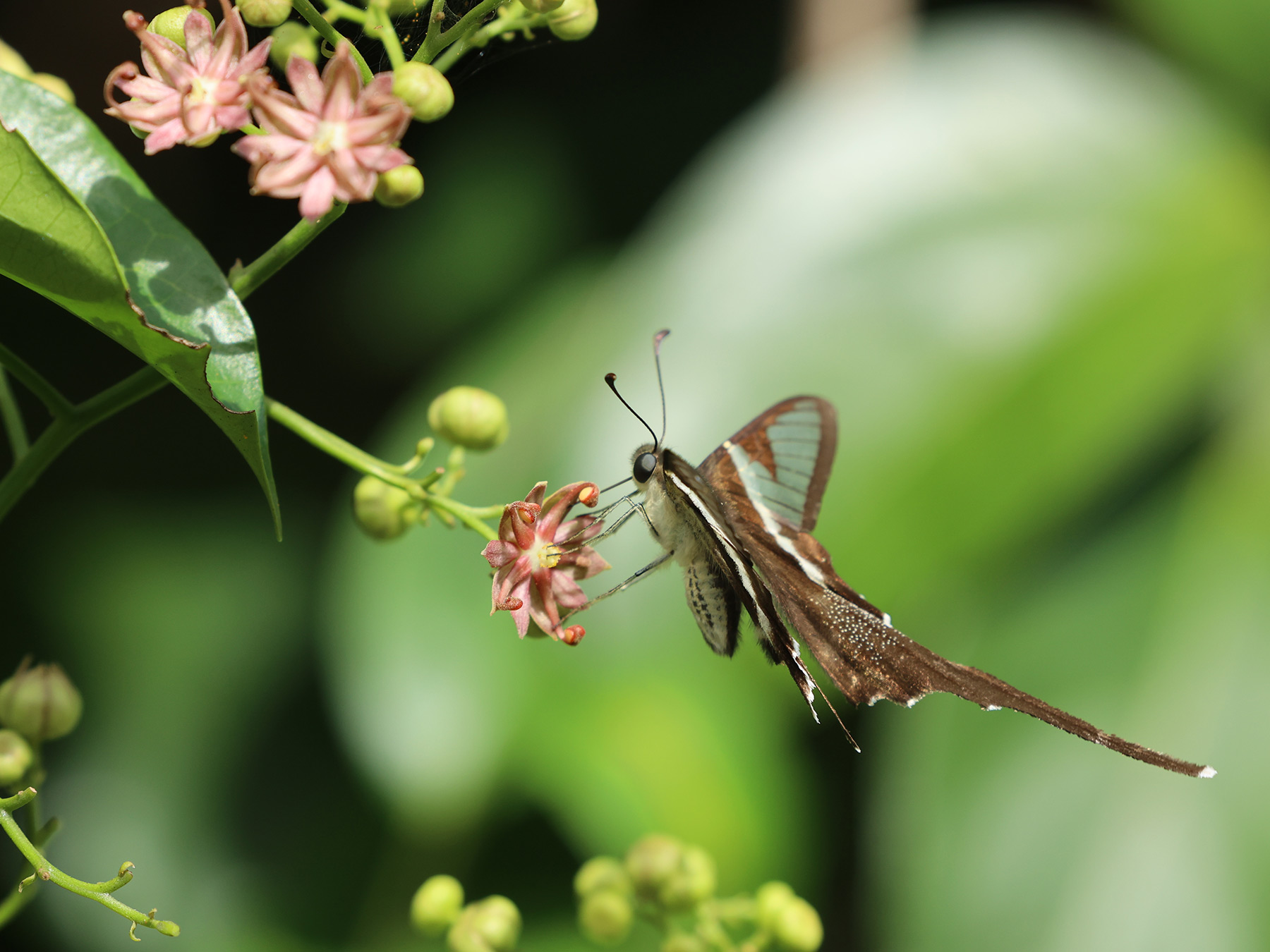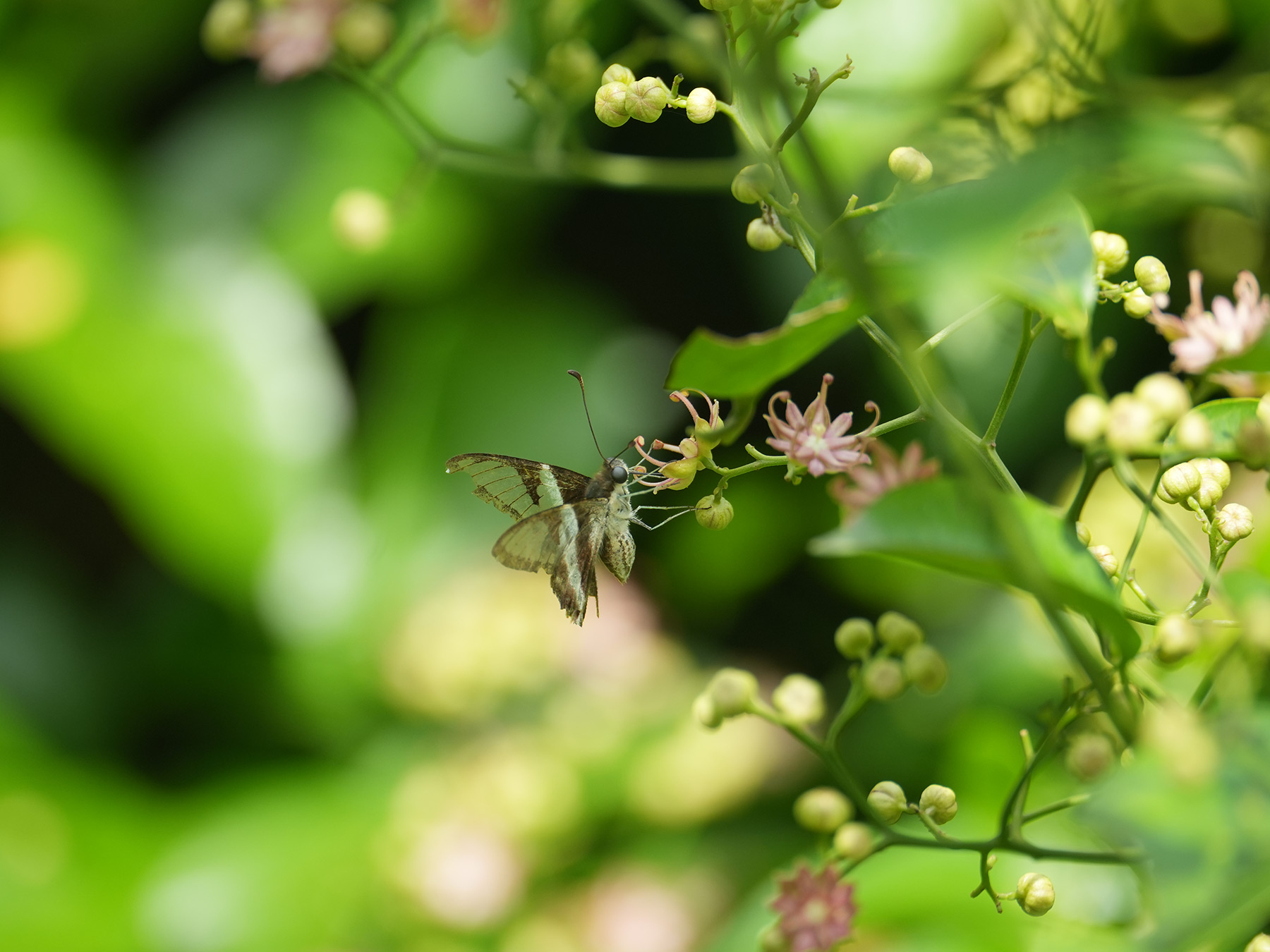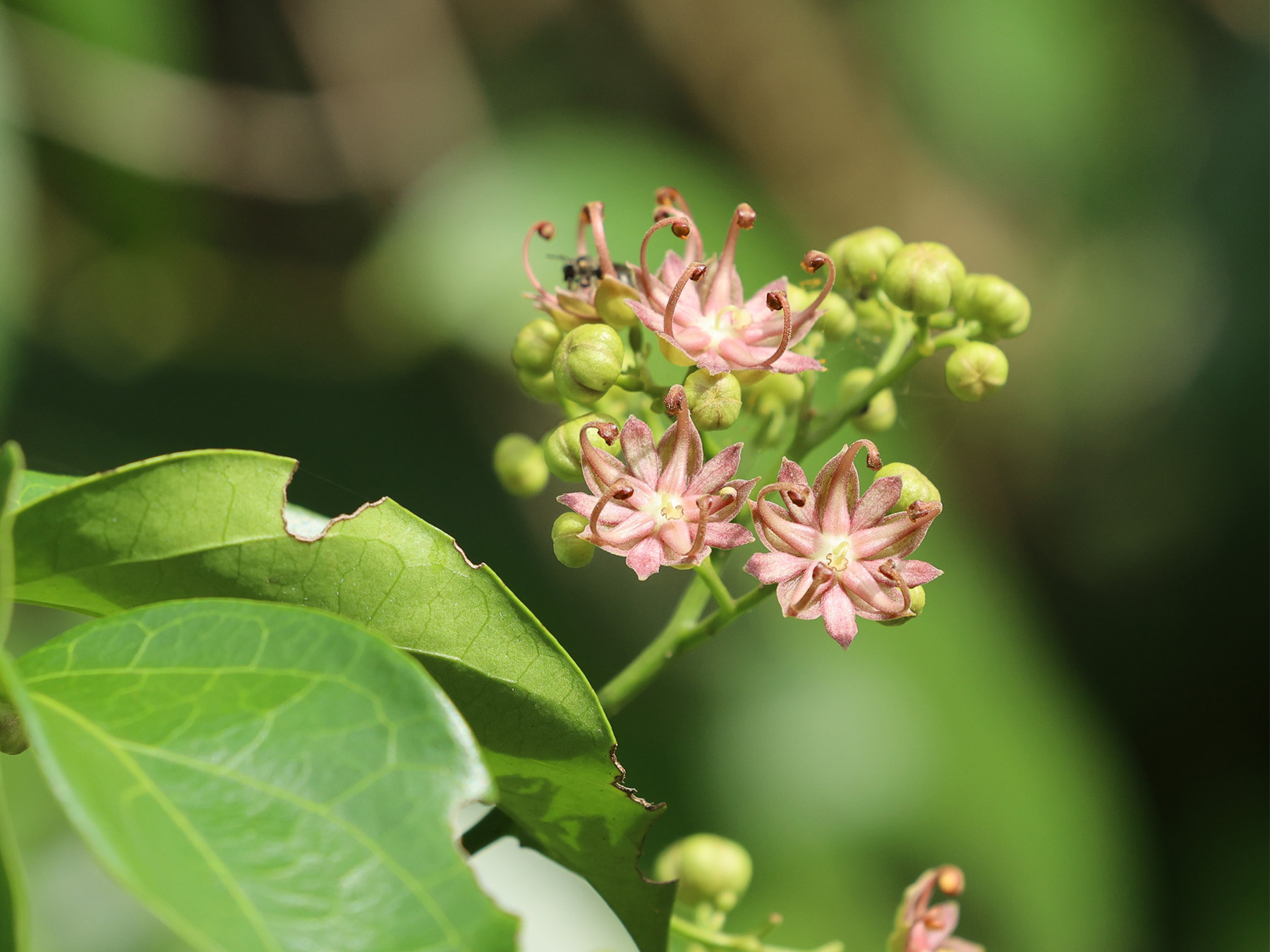A tailcoat is a type of man's coat for attending banquets. Interestingly, many animals are born wearing tailcoats, such as the Barn Swallow, the Paradise Fish and the White Dragontail butterfly. There are several butterfly hotspots (places with rich butterfly diversity) on Lantau Island, and you can find traces of White Dragontail in one of these hotspots.
White Dragontail (Lamproptera curius) is a rare species of butterfly in Hong Kong and one of the smallest in the Papilionidae family, measuring only about 35 to 45 millimetres in length with its wings spread. Despite its small size, the White Dragontail is a very fast flyer. As it flies in a way similar to that of a dragonfly, the butterfly can remain static in the air by flapping its wings, so it is named "White Dragontail". Unlike other brightly coloured butterflies, White Dragontails are gentlemen in tailcoats. Their bodies and wings are mainly in black and white, and because their forewings lack scales, they look like transparent glass windows. Their hind wings have two long tails, which are understated and unique. Often seen during spring and summer, White Dragontails enjoy visiting flowers to feed on nectar, and swarming around streams, puddles at roadside and other places to sip on water, in order to absorb minerals and reduce their body temperature.
The larvae of butterflies generally feed on certain types of plants (i.e., host plants) only, and there is a very close relationship between their abundance and distribution. The host plant of White Dragontail larvae is Illigera (Illigera celebica), which is a native vine species listed under the "100 Rare and Precious Plants in Hong Kong" due to its rarity and narrow distribution. The plant is also protected by Hong Kong law. Adult White Dragontails will lay eggs on the leaves of Illigera to reproduce. If you find Illigera in the wild, there is a good chance that you will find traces of White Dragontails in the vicinity.
Butterflies and their host plants are inseparable. While we conserve butterflies, we should also take care of the plants and habitats where they inhabit.


